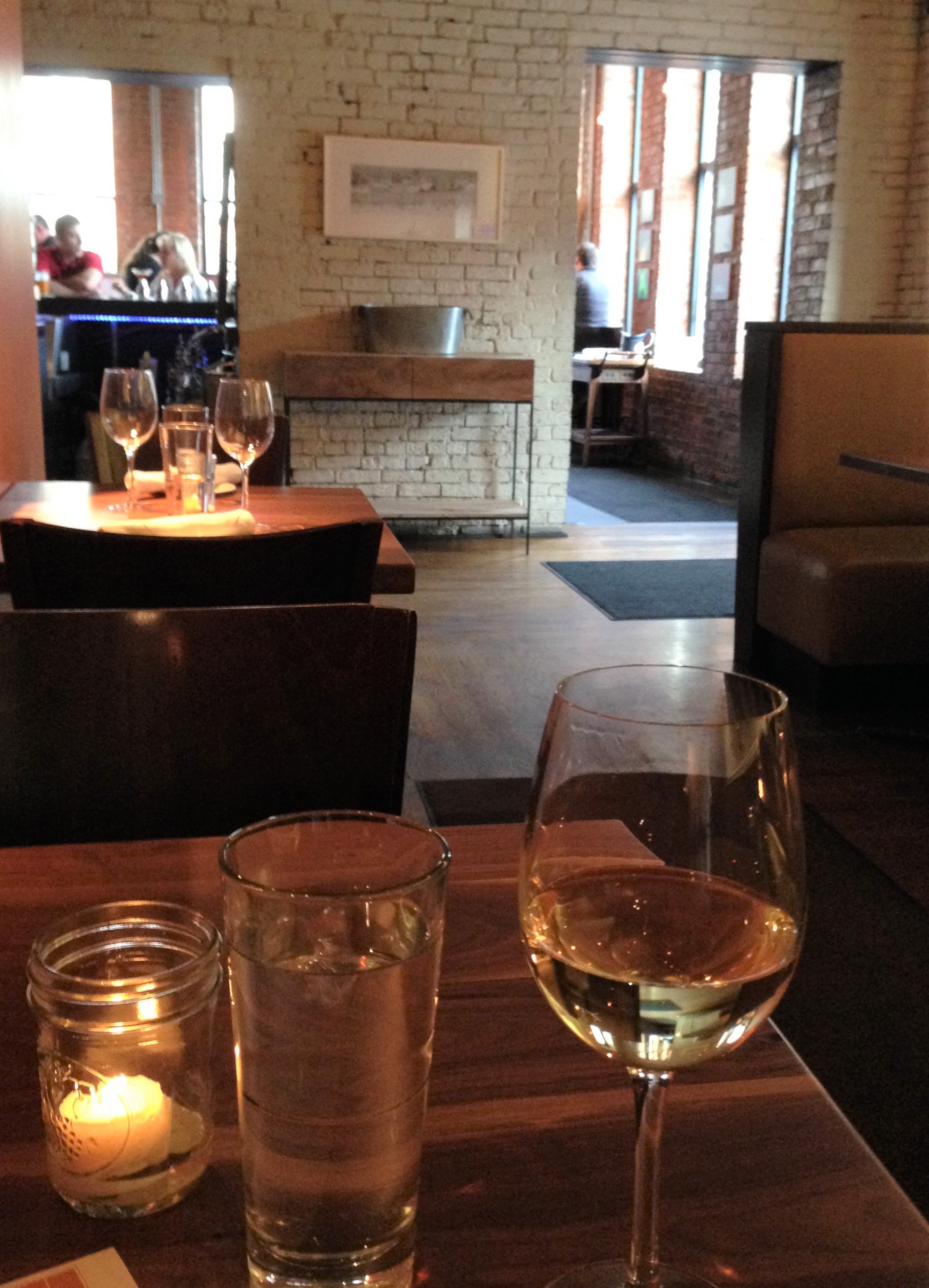When I first started traveling for business, I was petrified of dining alone. I thought I would be marked as a loser and I had no idea how I’d fill my time. So I bought take-out or ordered in room service, which sometimes worked OK because of the quiet or the chance to get out of my work clothes. But night after night — what a drag. After a busy day with clients, I learned how to comfortably enjoy a mid-week date night with myself.
When I started venturing out, I took a book or a couple hours’ worth of magazines or newspapers and headed for the hotel’s everyday restaurant or a nearby nondescript eatery. I was completely self-conscious and chose an obscure booth or table, trying to look occupied, self-possessed, or in a hurry, as if eating was part of the day’s frenetic continuum of a busy person, something to be endured. Soon I realized how dumb I was because, as a foodie, I’d rather not eat at all than chow down average food and blah wines.
In phase three, I got up the courage to go to fine restaurants — but schlepped along all that reading material. That was sheer comedy. How tacky to place a newspaper or magazine on a white table cloth beside a lovely place setting. How impractical to try to read a book with salt and pepper shakers or a sugar bowl holding the pages open while I cut and eat my food. How insulting, finally, to the chef, the servers, the other patrons, and, in fact, me to gallop through the meal without the slightest enjoyment and most likely drawing the attention that I was hoping to avoid.
I pushed myself and started going to fine restaurants — and in the process began to discover the real pleasure of dining alone. I’ll never forget the first time I spent $100 on myself for a meal at Vong (now closed) on Manhattan’s East Side. It was like having treated myself at a spa. I was liberated after that.
Soon after, I made a point of exploring a town’s signature restaurants, wherever they were located. Firebox Restaurant in Hartford, Connecticut is an example. Located south of downtown in Frog Hollow, in the Billings Forge Community Works founded by the Melville Charitable Trust to revitalize the neighborhood, Firebox is an unlikely location for a high-end dining experience. And if you’re not a local, you may not think to venture into an urban renewal zone to do just that. It’s housed in the repurposed red-brick complex of a former manufacturing company and provides job training in the culinary arts, a community garden and artists’ studios as well as operating a farmer’s market, catering business, bakery cafe and the noted Firebox Restaurant. Before taking on the Billings Forge venture, Executive Director Carey Wheaton owned five award-winning restaurants in Cambridge, Massachusetts, including her partnership in the trend-setting East Coast Grill with nationally known chef, cookbook author and food impresario Chris Schlesinger back in the 1980s.
In this case, I was seated at a fantastic table just off the kitchen – with a bird’s-eye view of the bar and the restaurant action (i.e., service at other tables). The cuisine lived up to my expectations, having heard about Carey for ywars. The migration – from Blue Point oysters to a duck breast so tender as to melt in the mouth and presented in a reduction with winter vegetables, served at the waiter’s suggestion with a rich red wine blend (Cabernet Franc, Grenache and Syrah from Les Baux, France). Suffice it to say, I kept ordering for over 2 hours of smartly designed dishes with expert preparation and service. And I was participating in an uplifting community story – the promise of changed lives through education, training and meaning coupled with premier dining.
Not all restaurants are appropriate for dining solo and of course what fits also depends on your personality. But my conversations with chefs, bartenders, servers, house managers, and other solitary diners have led to these guiding principles for having a great solo dining experience.
Solo dining essentials:
- Don’t load up with reading material. Watch the show around you and enjoy it vicariously.
- Sit at the bar or in the bar area — at least in nicer white-tablecloth restaurants. You can talk to the bartender, those around you, or no one (and listen to others’ conversations). The bartender usually knows everything about the kitchen, the chef, the owner, and the popular specials. (This is not recommended for pubs and noisy hang-outs, or smoky establishments.) I’ve been set up with a cloth mat, a votive candle, even a little flower in a tiny vase, to replicate the experience of the diners at the tables. And the service is great. Or, if you sit in the bar area at a small table, you can watch the scene from a perfect perch.
- Choose sidewalk tables on a busy thoroughfare. The people-watching can be as engaging as a pricey Broadway show. A woman alone is visually intriguing — particularly one who is staring back.
- If you really need to have company, choose restaurants with a community table.
- Recognize that some restaurants discourage (subtly) solo dining, but that’s diminishing. Looking at the economics, it deprives them of half their income for those 1-2 hours at one table. Ready for that, a friend once told me she typically makes reservations for two, but when her companion “didn’t arrive,” she decided to stay and have dinner alone.
- Appreciate the advantages of a fine meal in solitude, and enjoy the freedom of your own company. Some of the companions I’ve had, I would have rather been eating alone.




